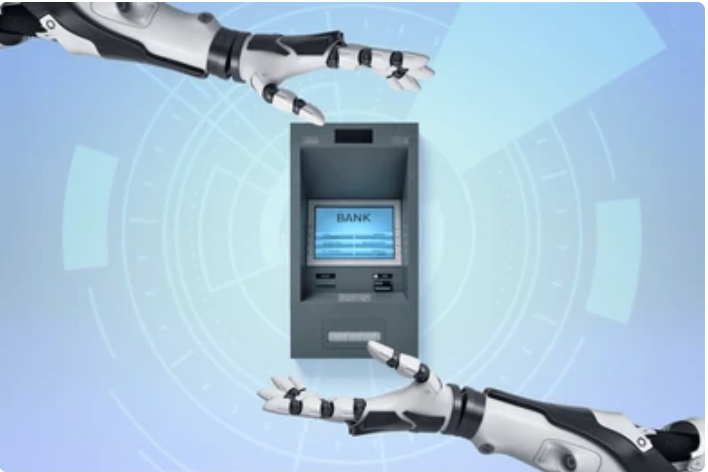by Franzel Daleon, Correspondent
In a country where a smile often precedes a sentence and where even strangers are called “kuya” and “ate,” customer service in a bank — or any establishment for that matter — is more than just a transaction. It is a cultural contract. In the Philippines, to serve is to connect.
Now, as banks across the archipelago integrate artificial intelligence (AI) into everyday operations, a pressing question arises: Can a machine say “kumusta” and truly mean it? This article explores how AI is reshaping Filipino banking — and whether it can coexist with the human touch.
The rise of the virtual teller

The banking experience in the Philippines has changed dramatically in just a few years. The long queues under flickering fluorescent lights — once a hallmark of payday Fridays — are now slowly disappearing.
In their place are mobile apps that respond in seconds, chatbots that never sleep, and AI systems that process loan applications at record speed.
Financial institutions like the Bank of the Philippine Islands (BPI), UnionBank, and Rizal Commercial Banking Corporation (RCBC) have already rolled out AI-powered tools to meet rising digital demands.
RCBC’s “Digital Concierge” answers routine inquiries with near-instant precision, while UnionBank’s AI-enhanced platform, equipped with natural language processing and predictive analytics, is setting benchmarks in the region.
While AI remains key to financial services transformation, behind every chatbot response also lies an essential truth: not all customers want efficiency if it means losing empathy.
A cultural expectation: Human touch, warmth as a service

In a 2025 Pulse Asia study on digital banking behavior, 71% of Filipino respondents said they prefer speaking with a human for complex or emotionally sensitive banking matters. While 84% appreciated the speed of virtual assistants, more than 60% expressed frustration when AI failed to recognize emotional cues or misunderstood local expressions.
“Filipino customers expect empathy, even over the phone,” said Maria Therese Gonzales, Senior VP for Customer Experience at a leading commercial bank. “It’s not just about solving problems — it’s about being heard.”
This mirrors the Filipino concept of malasakit — a deeply embedded sense of concern for others. Whether resolving a disputed transaction, applying for a small business loan, or asking for pension support, Filipinos want their stories honored, not just processed.
Inside the hybrid strategy: Where AI ends, people begin

To preserve emotional intelligence, banks are designing hybrid service models that combine automation with human engagement.
“We train our AI to handle tier-1 interactions—balance checks, branch locations, password resets,” explained Joseph Arriola, Head of Digital Transformation at UnionBank. “But once a conversation moves into something more personal—like a loan dispute, a lost card, or a payment issue—we route it to a human agent trained not just in process, but in compassion.”
BPI has invested in AI that can detect frustration or confusion in a customer’s tone or choice of words. Once triggered, the system automatically escalates the chat to a live agent. These “empathy triggers” are part of what Gonzales calls “AI with a conscience.”
Teaching empathy to machines?

Can empathy be taught to machines? Filipino banks are trying. Developers are training AI tools to understand Filipino English, Taglish, and regional languages like Cebuano or Ilocano. But beyond grammar, it’s about intent.
RCBC’s chatbot, for instance, draws on thousands of real customer conversations to mirror how Filipinos actually speak. It recognizes cultural pleasantries, indirect phrasing, and conversational softness often used in difficult financial discussions.
Still, AI has limits. It can detect urgency but not grief, recognize patterns but not heartache. For many Filipinos — especially seniors and those in rural areas — banking remains rooted in trust built on handshakes, not just passwords.
Customer voices: The need for human anchors

A 2025 Customer Experience Index by consulting firm Kantar revealed that while digital satisfaction was high in urban centers, 34% of customers in Visayas and Mindanao still preferred in-person interactions even when mobile options were available.
“Ang hirap kausap ng robot minsan,” said 62-year-old Luzviminda Ramos, a retired public school teacher from Davao City. “May mga bagay na kailangan kong i-explain ng maayos, lalo na kung may problema sa pension ko. Mas kampante ako pag tao ang kausap ko.”(“It’s hard to talk to a robot sometimes. There are things you really need to explain clearly — especially when there’s an issue with my pension. I feel more at ease speaking with a person.”)
The insight is clear: while AI excels in efficiency, trust is still a human language.
Ethical horizons: Privacy, bias, and consent

As banks automate, ethical concerns intensify. AI systems process vast amounts of personal data—voice recordings, behavioral patterns, transaction histories.
Concerns around privacy, bias, and digital literacy are growing alongside the machines.
Advocacy groups like Digital Rights Watch Philippines call for transparency in how customer data is used. “There’s a gap in consent and understanding,” said DRW executive director Paolo Medina. “Especially when chatbots are used for financial guidance — people must know when they’re speaking to a machine, and what’s being recorded.”
These are not just technical issues — they go to the heart of trust in the financial system, something Filipinos value deeply.
The future: Blended, not binary
If there’s a lesson in all this, it’s that the future of banking in the Philippines will not be a choice between humans and machines — it will be both. Machines may respond, but humans still relate.

In the age of AI, the most successful financial institutions will not be those that automate the fastest, but those that integrate automation with intention.
Think of it as a duet: AI sings the verses — quick, precise, efficient — while humans deliver the chorus — warm, flexible, empathetic.
Marrying these strengths is no small feat. But if there’s one thing that the Philippine service industry has always done well, it’s turning even the most procedural interactions into moments of connection.
In the silence after a customer query is typed, there is a pause — not just for an answer, but for recognition. Did the bank see me? Did it understand my worry, my urgency, my story? AI can provide solutions. But for Filipinos, the best service still comes with a voice — gentle, understanding, and unmistakably human.








